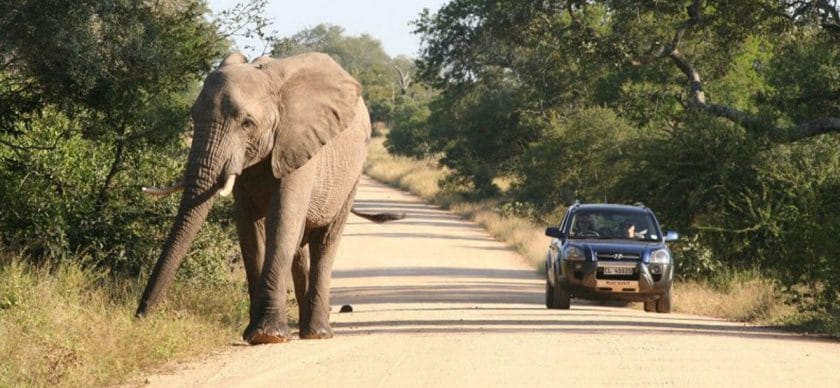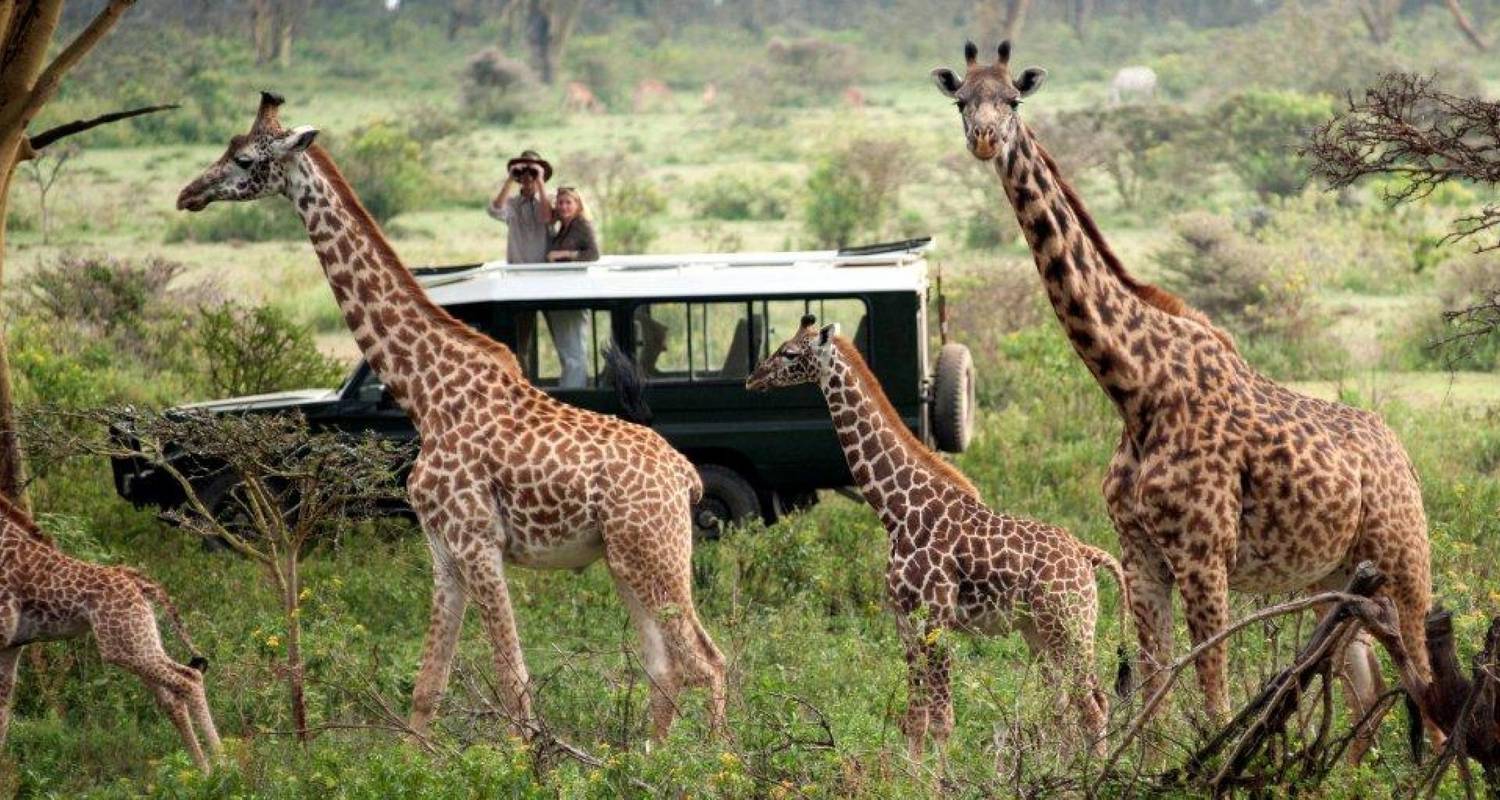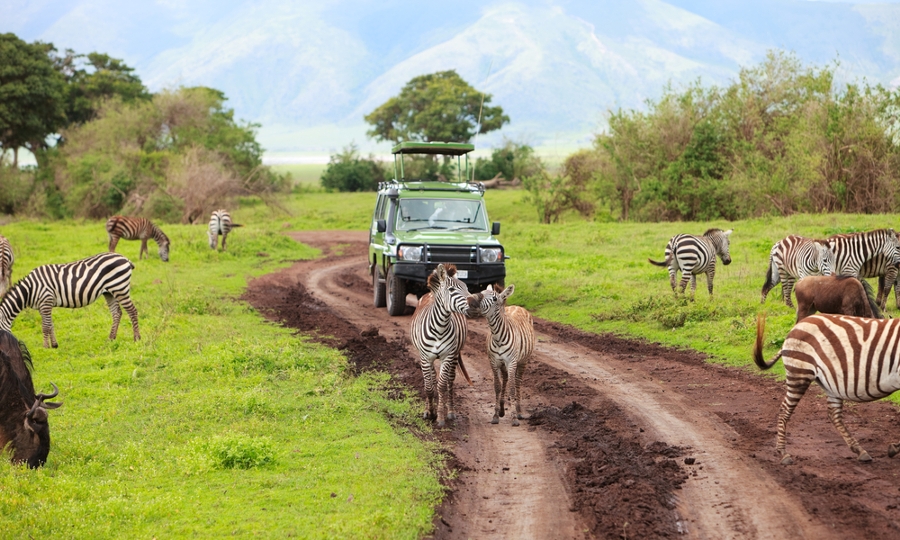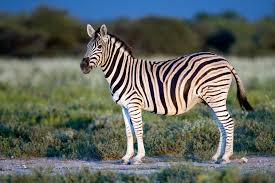Usual Stunning Animals Found In Mikumi National Park In Tanzania
A variety of animals, ranging from part of the big five are the usual stunning animals found in Mikumi National Park that is, lions elephants buffalos leopards
Mikumi National Park is found in Tanzania, near Morogoro. The park covers a total land area of 3230 square kilometers making it the fourth biggest national park in Tanzania. It is the easiest park to access because most of its pick-up points are from Dar es Salaam, the former capital of Tanzania. The Park was gazetted in 1964 and is named after the Spindle-shaped Borassus palm trees. The park is home to a variety of animal species and over 400 bird species. The park is home to more grazing animals than predators. Birds found in Mikumi National Park include marabou stork, red-billed ox peckers, francolin, cattle egret, guinea fowls, hornbill, and malachite kingfisher.
Usual animals at Mikumi National Park
Lions
The lion is a large cat of the genus Panthera Native to Africa and India. Lions have features such as a muscular broad-chested body, round ears, rounded head, and hairy tuft at the end of their tail. A group of them living together is known as pride. A pride usually consists of about three adult males, related females, and cubs. At the age of three, a male lion leaves its pride in an attempt to take over another pride.
Lions do not actively go after humans as prey and only do so when provoked. There has been a decline in the number of lions by 43% since the 1990s. There is no clear reason as to why there is a decline but conflicts with humans is suspected to be one of the causes.
These are known as ‘Simba’ in the local Kiswahili language and are the most sought-after animals by tourists on a safari. Mikumi National Park has two types of lions that is, the tree-climbing lions and the land lions. The park offers the best chance of seeing the tree-climbing lions and they are best spotted during day time climbing the acacia trees. They are found in the Northern and Southern parts of the park.
Land lions are best spotted at night because they are nocturnal animals and they see better at night. Because of this eyesight advantage over their prey, they prefer to prey at night. Therefore, tree-climbing lions are best seen during morning and afternoon game drives while on land lions are best seen during night drives.
Leopards
The leopard is a big cat of the genus Panthera too. They are found in Africa, parts of the Middle East, and Asia including China, India, and Eastern Asia. Leopard’s fur is generally soft and thick, its color ranges from pale yellow to deep gold and it is patterned with black rosettes while the head, lower limbs, and belly are spotted with solid black. Its body is slender and muscular. A group of leopards is known as a leap.
Leopards are known to be fast, vicious, and courageous in that even when wounded they can still attack and they are known to not fear humans and attack them for no reason.
While on a safari at Mikumi National Park, one can see the uncommon timid leopards. Spotting them requires keenness on the side of both the guide and the tourists. Sometimes the guides know their spots so they can easily lead the tourists to them.
Hyenas
Hyenas are feliform carnivorous mammals belonging to the family Hyaenidae. Their genus is Crocuta. They are found in most habitats including savannas, grasslands, woodlands, forest edges, sub-deserts, and even mountains. There are five species of hyenas namely; spotted hyena, striped hyena, brown hyena, aardwolf, and crocuta. A spotted hyena has a large head with a long thick muscular neck and powerful jaws that give them the strongest bite of any mammal. Its front legs are longer than its back legs. A striped hyena is a bit smaller than a spotted and brown hyena and they have a broad head with dark eyes, a thick muzzle, and large pointed ears.
Hyenas can be easily spotted at Mikumi National Park because they are a common specie at the park. The most common ones are the African spotted hyenas and they in most cases travel in groups of twos to tens. They prefer to prey on the smaller animals if their pack is small but a bigger pack of hyenas will hunt for bigger animals such as zebras, buffalos, wildebeest, and others.
Elephants
Elephants are the largest land-existing animals. They belong to the family Elephantidae. They weigh differently based on their types that is, The Asian Elephant weighs 4000 kilograms, The Bush Elephant that weighs 6000 kilograms, and The African Forest Elephant that weighs 2700 to 6000 kilograms. Features of elephants include a long proboscis that is known as the trunk, tusks, large ear flaps, pillar-like legs, sensitive grey skin, and thick skin. The trunk is prolonged and it brings food and water to the mouth, tusks serve both as weapons and tools for moving objects and digging, and the large ear flaps assist in maintaining and regulating body temperature and also communication.
Mikumi National Park is a natural habitat for elephants. Elephants can be spotted during a game drive at the park. The open landscape of the park offers excellent visibility of the elephants that can be seen at a distance grazing, This is best done in the dry season when the vegetation is thin giving a clear view and making it easy to spot the elephants. Since they are highly social creatures, they can form a clan of up to seventy animals but a herd usually consists of ten animals.

Antelopes
They belong to the family Bovidae and the order Artiodactyla. Antelopes account for over two-thirds of the approximately 135 species of hollow-horned ruminants which include cattle, sheep, and, goats. They are typically light, elegant, slender, graceful-limbed, small cloven-hoofed, and short-tailed animals. A unique feature about them is that they have a highly developed sense of hearing to detect predators and they are the most hunted for by predators like lions, leopards, hyenas, wild dogs, and cheetahs.
Mikumi National Park is one of the best parks in Uganda for seeing antelopes. The greater Kudu and sable antelope can be found in the Miombo woodland-covered foothills of the mountains that rise from the park’s borders. The Lichtenstein’s hartebeest is also another specie of antelope found in the park.
Buffaloes
The Buffalo is a large sub-Saharan African bovine. They belong to the family Bovidae and the genus Syncerus. Three types of buffalos exist that is; water buffalo, cape buffalo, and American buffalo. They have the following features; stout legs to support their ox-like body, broad hooves, well-developed false hooves, short robust legs, brown hair with a black nose, and others. A group of buffaloes is a herd. The male buffalo can be differentiated from the female one by the shape of its horns. Male ones have u-shaped horns and female ones have w-shaped horns.
Mikumi National Park has the African Buffalo and they can be spotted almost everywhere in the park. They are seen moving in large herds in the park during a game drive. They can be seen grazing 0r drinking water around the park in their large herds. They are also very easy to identify because of their short legs, large bodies, and u-shaped or w-shaped horns.
Jackals
Jackals belong to the order Carnivora and the family Canidae. They live in open savannas, deserts, woodlands, and arid grasslands. There are four different kinds of jackals namely; Golden jackal, African Golden Wolf, Black-Backed Jackal, and Side Stripped Jackal. The golden jackal has the following features; smaller size compared to the gray wolf, a more elongated torso, a less prominent forehead, shorter legs and tail, and a muzzle that is narrower and more prominent. Its color is usually yellow to pale gold and brown tipped but varies with season and region.
The African Golden Wolf has amber-colored eyes, and the female bear four pairs of tits, a pointed muzzle, and harper robust teeth. They are also monogamous animals. Black-Backed shaped jackal has black hair running from the back of the neck to their tail and that is what distinctively gives it the name ‘Black-Backed.’ It also has a black bushy tail. A black-backed jackal mates for life and once a mate dies, the other will most likely lose its territory. Side Stripped jackal has shorter legs and ears, is grey, and is a nocturnal dog.
At Mikumi National Park, there is an existence of black-backed jackals. The jackals have bodies well equipped for chasing prey, with long legs and lightweight that makes running very easy. They also have excellent hearing to detect the movement of prey. They prey on small antelopes, insects, ground-dwelling birds, and reptiles. They also eat fruits, berries, and grass.
Giraffes
The giraffe is a large African hoofed mammal belonging to the family Giraffidae and genus Giraffa. It is the tallest living terrestrial animal and the largest ruminant on earth. The types of giraffes include The Northern Giraffe, Reticulated Giraffe, Southern Giraffe, and Masai Giraffe. The features of giraffes include; long necks, short stiff manes, long blacked hair tails used as insect swatter, long prehensile tongues, large brown eyes, and short skinned covered horns.
Mikumi National Park has the Masaai giraffe. They can be seen grazing in the remote acacia stands that line River Mkata. It is easy to spot them while on a game drive because of their long necks and their spotted bodies.

Zebras
Zebras are African equines with distinctive black and white striped coats. They belong to the family Equidae and the genus Equus. Their types include Mountain Zebra, Grevy’s Zebra, and Plains Zebra. Features of the zebras include; black and white stripes, Grevy’s are the largest with long necks, prominent and erect manes, and largest ears, and Plains Zebra are the smallest.
All grazers and bulk roughage feeders that consume large daily quantities of grass can be found at Mikuni National Park during game drives.

Hippopotamus
The hippo is a large mammal native to sub-Saharan Africa. They are the third largest mammals on earth. They belong to the family Hippopotamidae and the genus Hippopotamus. They have a bulky body, stumpy legs, enormous heads, short tails, and four toes on each foot, they are strong swimmers, they are herbivores, and their gestation period is 243 days which is eight months. Being part of the Big Five makes them have a direct impact on the ecosystems. Two species are; The common river hippos and the much smaller pygmy hippos.
There is a waterhole at Mikumi National Park known as the hippo pool. It is man-made and is situated five kilometers northwest of the main entry gate. While on a game drive, one can have an up-close view of hippos at the hippo pool together with other animals too.
The best time to visit Mikumi National Park
The best time to visit the park is undoubtedly the dry season. Here, you have a chance of seeing all kinds of animals the park has to offer except the wet and transition season. During the dry season, you get to carry out a lot of activities such as game drives both day and night, camping, picnics, nature walks, hiking, and others. Also, during the wet season, the vegetation thins out making it easy to spot the animals and also most of the animals concentrate at waterholes and the hippo pool making spotting them much easier.
Accommodation at Mikumi National Park
Mikumi National Park has luxury accommodations, mid-range accommodations, and budget accommodations. Luxury accommodation is for those tourists seeking luxurious services such as luxurious rooms with elegance, amazingly comfortable beds, conference and event facilities, in-house restaurants, excellent room service, spa facilities, bar spaces, excellent amenities, onsite services, 24/7 room service, gym, and pool facilities. Examples include Serena Mivumo River Lodge, Vuma Hills, Lemala Manyara, Lake Manyara Serena Safari Lodge, Escarpment Luxury Lodge, Ol Tukai Mayara, Lake Manyara Tree Lodge, and Stanley’s Kopje Camp.
Midrange accommodation is for tourists seeking all the comfort an average tourist would expect from a hotel. It provides the perfect basis for the value of money and comfort. Features of mid-range hotels include comfort, room service, and amenities such as wifi, gym facilities, and bar, and restaurant facilities. Examples include Mikumi Wildlife Camp, Mikumi Safari Cottages, Mikumi Adventure Lodge, Angalia Tented Camp, Camp Bastian Mikumi, Mikumi Adventure Lodge, and Mikumi Wildlife Camp.
Budget accommodation is for tourists on a fixed budget. They are usually small or mid-size rooms that offer basic facilities and services for a low price. Features of budget hotels are basic facilities without any luxurious features such as clean beds, clean bathrooms, and security. Examples include Mikumi Safari Lodge, Mikumi Resort, Tan Swiss Lodge, Vamos Hotel, Mantis Lodge and Camping, Graceland Hotel, New Hotel Aquiline Arusha, The White House of Tanzania, Marimba Palm Hotel, Safari Inn, Mkomazi Hotels and Camping, Camp Atupele, and Voyage Village.
Frequently asked questions
Are there lions in Mikumi?
Yes, there are lions at Mikumi. There are two kinds of lions at Mikumi National Park that is, The tree-climbing lions and the land lions. The tree-climbing lions can be seen on the dotted acacia trees climbing from one tree to another and the best time to see them is during the day time during a morning game drive while the land lions are best spotted at night during night game drives when they are most active hunting for prey.
Therefore a tourist that wants to see lions can go on a safari at Mikumi National Park.
What are the typical animals in Tanzania?
Tanzania has the Big Five animals in some of its game parks like Ngorongoro Crater, Serengeti National Park, Tarangire National Park, and Arusha National Park while others like Mikumi National Park have part of the Big Five. Typical animals in Tanzania therefore include; lions, leopards, African buffalos, cheetahs, giraffes, hippopotamuses, wildebeests, rhinoceros, elephants, baboons, zebras, African wild dogs, spotted hyenas, impalas, vervet monkeys, Thomson’s gazelles, servals, crocodiles, elands, and common chimpanzees.
What is unique about Mikumi National Park?
Firstly, Mikumi National Park is home to the big four that is lions, leopards, elephants, and buffalos. This makes it unique because most tourists love to see part of the big five. Secondly, it is also a birding paradise as it is home to more than 400 bird species. Examples of the birds include; spur-winged goose, white-faced whistling duck, knob-billed duck, helmeted guinea fowl, eastern crested guinea fowl, crested francolin, coqui francolin, common quail, speckled pigeon, mourning collared dove, red-eyed dove, ring-necked dove, and many others. The park also has beautiful scenery characterized by its scenic plains and baobabs. The scenic landscapes include Chizua Waterfalls and Kinole Waterfalls.
What animals are in Tanzania park?
Tanzania has the Big Five animals in some of its game parks like Ngorongoro Crater, Serengeti National Park, Tarangire National Park, Ruaha National Park, and Arusha National Park while others like Mikumi National Park have part of the Big Five. Tanzania also has the highest number of predators in Africa. Typical animals in Tanzania include lions, leopards, buffalos, zebras, sables, elands, spotted hyenas, jackals, wildebeest, cheetahs, rhinos, African wild dogs, caracal, common warthog, serval, Impalas, Gazelles, Honey badger, topi, galago, dik-dik, olive baboon, Flamingos, kori bustard, hoopoes, marabou stork, vultures, Pemba scops owl, lappet-faced vulture, jacanas, turaco, Egyptian goose, guinea-fowls, bat-eared fox, African jacanas, Nile perch.


